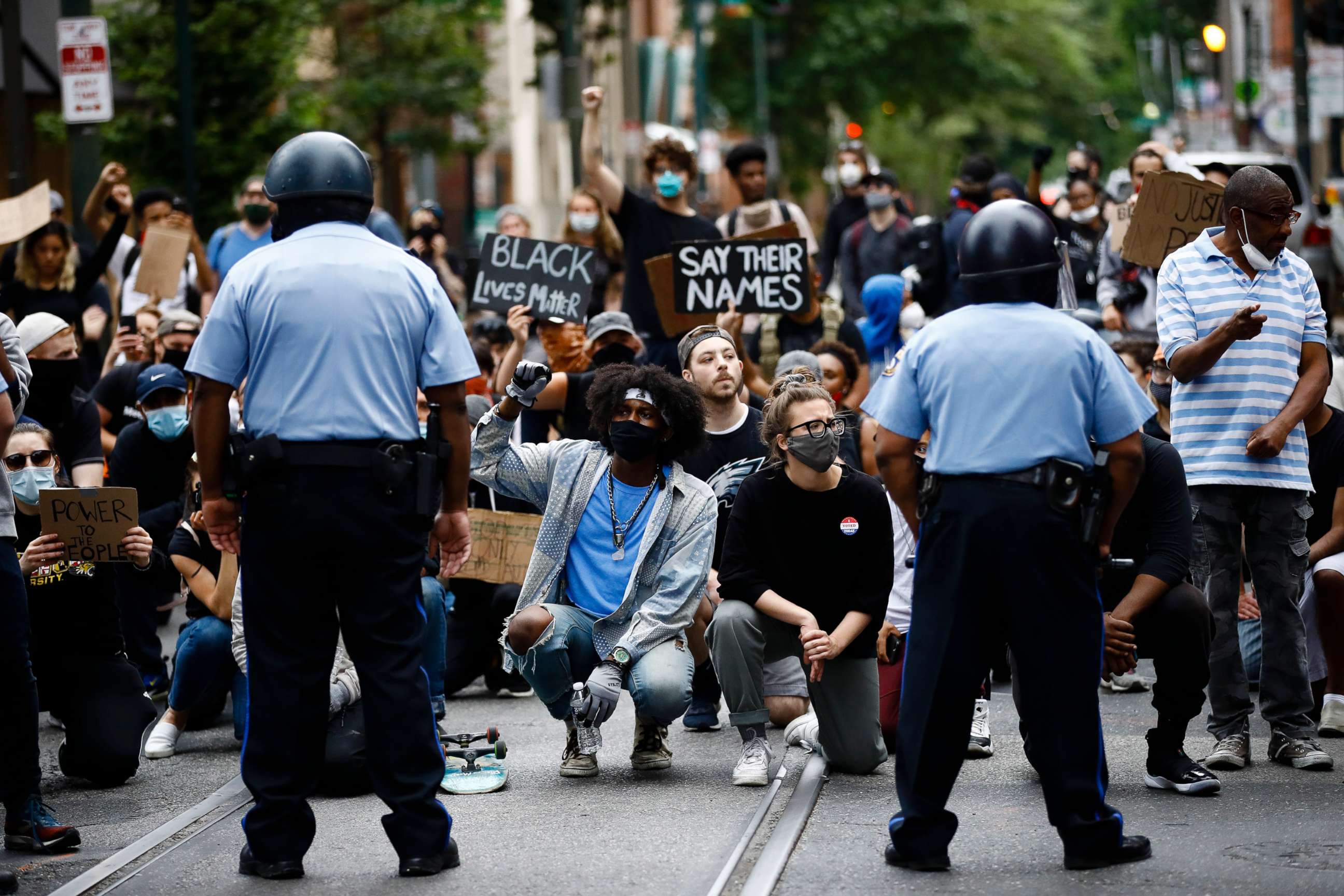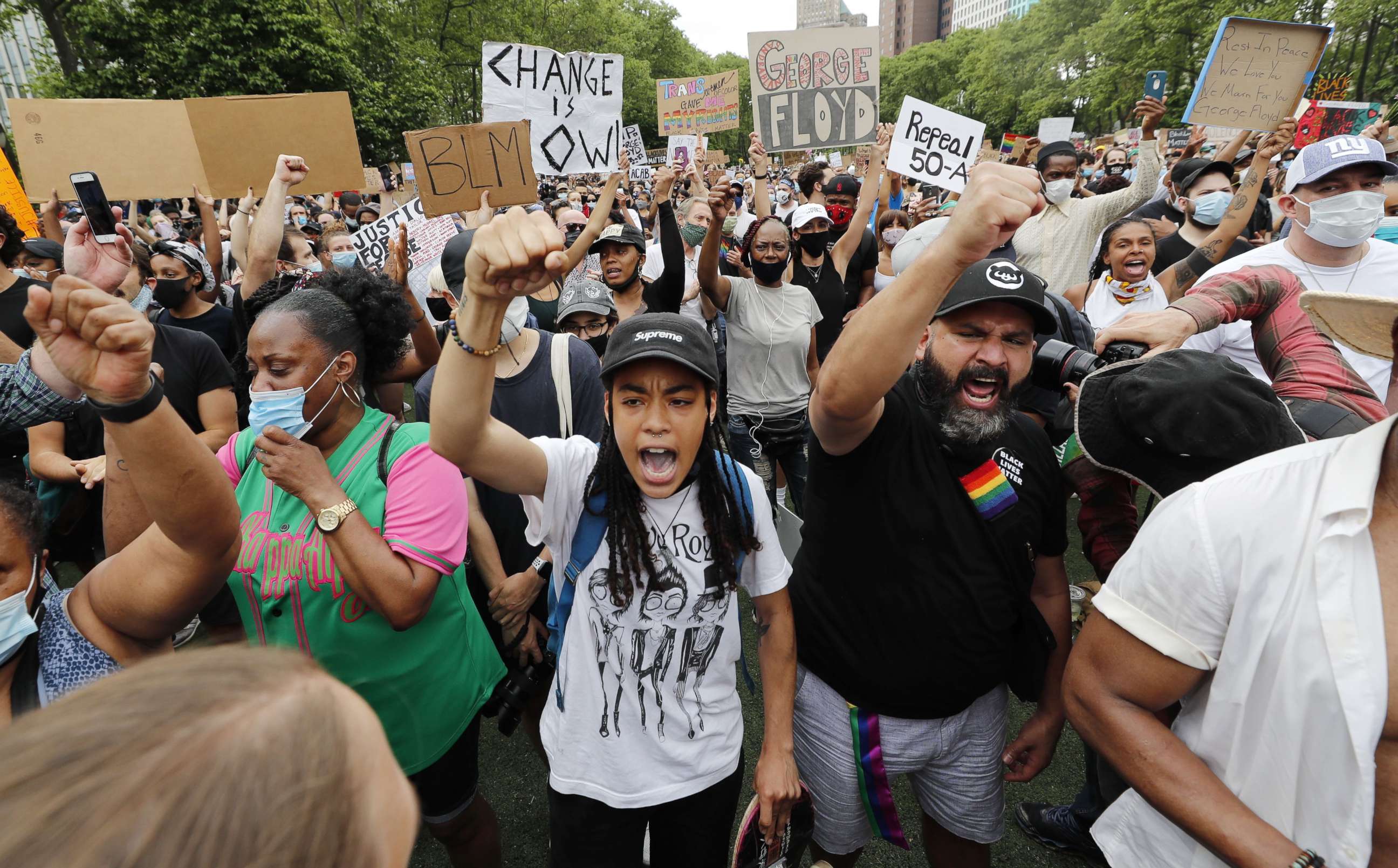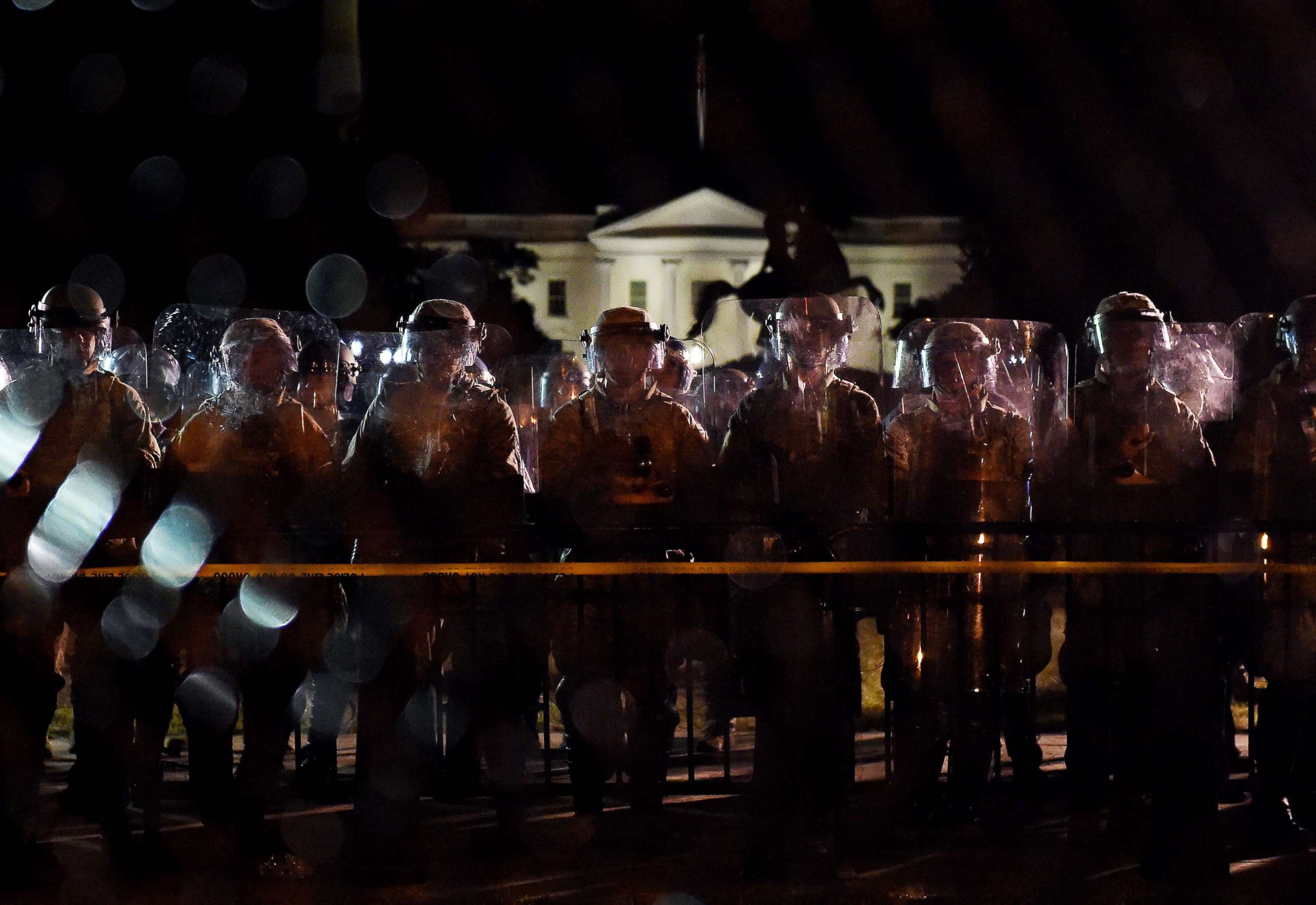What the latest research tells us about racial bias in policing
Less than half of sworn officers report use-of-force data.
As widespread protests in response to George Floyd's death at the hands of Minneapolis officers continue, Americans are calling for reform. Demonstrators carry signs listing the names of black Americans killed by law enforcement and share videos of officers using excessive force on black civilians.
But while anecdotal evidence about discriminatory and brutal policing abounds, the research into bias in policing is thornier, experts say.

Part of the problem lies in the data itself, which researchers described as "terrible" and "atrocious." Civilian deaths at the hands of police are easier to track and analyze, but documenting use-of-force by police officers presents research obstacles. Law enforcement agencies can voluntarily report those statistics, but it's not mandatory, which leaves huge gaps in the data. The data available is not impartial, since police agencies are reporting on themselves. Other sources, like the nonprofit Gun Violence Archives, rely on local news to track shootings by police officers, but that's also flawed. Not every shooting or violence incident makes the papers.
With those caveats in mind, here's the latest on what we know, and importantly, what we don't know, from researchers who study racial bias in policing:
Police disproportionately shoot and kill black Americans
In March, Dr. Matthew Miller, a veteran gun violence researcher and professor of health sciences and epidemiology at Northeastern University, co-authored a study on civilians who were shot and killed by police officers between 2014 and 2015.
Roughly 1,000 people are shot to death by police officers every year, and after analyzing those deaths, Miller and his co-authors found that black Americans were twice as likely to be shot and killed by police officers, compared with their representation in the population.
Previous research, including the Washington Post's fatal force project, which had logged deadly police shootings since 2015, has come to similar conclusions about police officers disproportionately killing black Americans.
In the new study, black Americans were three times more likely to be shot and killed by police officers during interactions where the victim appeared to pose little or no threat to officers, the researchers found.
To analyze the deaths, the researchers used data from the Centers for Disease Control and Prevention's National Violent Death Reporting System, which relies on police and medical examiner reports.

Miller acknowledged that although Floyd died in custody, he wasn't shot by police officers.
Still, he said, Floyd "epitomizes a vulnerable person who posed zero risk to the officer who killed him by kneeling on his neck for nine minutes."
"When you look at the very large number of people killed every year by police officers, blacks are overrepresented among those deaths, but even more represented in the subgroups where they appear to pose little or no threat," he said.
"That's where I see the connection between our data and this horrific murder."
Less than half of officers report non-fatal use-of-force data
Without a comparable dataset like the National Violent Death Reporting System for non-fatal use-of-force, it's much harder to draw firm conclusions about how racial bias factors into police brutality.
"We know more about fatal force than we do non-fatal force," said Justin Nix, an associate professor of criminology and criminal justice at the University of Nebraska Omaha.
"For every one fatal shooting, there are two or three non-fatal shootings that don’t get picked up," he said. "It really inhibits our understanding of how often police officers use deadly force."
Existing resources, like the Gun Violence Archives, were built by compiling local news coverage. If an officer shoots and misses, for example, it's likely not going to make the news and therefore won't get counted.
Then there are problems with the field itself. Unlike other areas of science, where scientists run randomized controlled studies, you can't run a real-life experiment on racial bias in policing. Officers know they are under a microscope during laboratory simulations, experts say. Large datasets that contain aggregate data don't tell us much about individual incidents, which are inherently subjective. It's hard to separate individual officer bias from bias that's baked into policy, like deploying police more heavily in black neighborhoods. Falsified forms are a problem.

In 2018, the Federal Bureau of Investigation announced that it would start collecting statistics about use-of-force from police agencies around the country, but that participation would be voluntary.
That opt-in policy meant that only 6,700 of state, local and trial law enforcement agencies, representing roughly 40% of sworn officers, participated, according to the nonprofit Police Executive Research Forum.
"I think it’s a sign of willingness to be transparent. For every agency that’s not taking part, I think it’s fair for the citizens to ask, 'Why not?'" Nix said.
"There’s nothing they should be held to higher accountability for than the use of deadly force," he added.
The FBI plans to release its first report on the data this summer.




